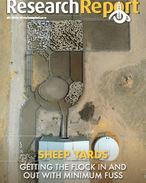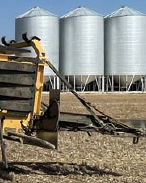This article is 7 years old. Images might not display.
The partnership involves several research organisations including the GRDC and is being coordinated through Horticulture Innovation Australia.
The hubs will be fitted with sophisticated traps that capture airborne fungal spores and insects, and reference them against time, GPS, temperature, humidity, wind speed and direction data.
“The system will be designed to identify whether a ‘spore shower’ has actually happened, for botrytis or rust diseases, for example, triggering a warning to growers that a fungicide spray is required. But it may also demonstrate that spore levels are low, meaning growers will not need to spray,” said Dr Rohan Kimber, a researcher with the South Australian Research and Development Institute (SARDI) pulse and oilseed pathology group.
“Accurate monitoring of existing diseases and pests will provide growers with timely and accurate information about pests and pathogens in their region, help them with management decisions to optimise inputs, and demonstrate pest-free status to export markets,” he said.
The GRDC and Plant Biosecurity Cooperative Research Centre supported Dr Kimber to develop the concept, based on similar work at Rothamsted Research, in the United Kingdom, investigating new technologies for air sampling and pathogen detection.
Under the project Dr Kimber will work alongside Dr Alan McKay at SARDI’s Molecular Diagnostics Centre, which will develop tests for a broader range of pests, including insects and fungi, using DNA extracted from the traps. These tests are similar to those used in the PreDicta B soil test that growers use to understand their risk of soil-borne diseases such as nematodes and crown rot.
The aim of the project is to develop a system of mobile, cross-industry pest-surveillance hubs to provide primary producers and government with up-to-date information on established, trade-sensitive and exotic pests.
Eight pilot monitoring hubs will be positioned in major agricultural sectors and at peak times for pest activity to monitor potential incursions.
The hubs will also be used for spot checks in pest-free regions, with the data gathered used to support market access.
“Our vision is to demonstrate how a multi-functioned system can provide online information to growers to assist them with making real-time decisions about managing diseases and pests,” Dr Kimber said.






















